Code for Sustainable Homes LEVEL 3
This is the minimum requirement for a new house in Monmouthshire/Gwent.
For this 57 points are required out of a possible 100
Level 1 36 points
Level 2 48 points
Level 3 57 points
Level 4 68 points
Level 5 84 points
Level 6 90 points
It has been discussed that Code 3 adds £5-7000
Code 4 adds £7-10,000
and Code 6 adds £40-50,000
As well as designing a new home with a possible structural engineer involved, since 2006 it has all changed. Now for 1012 homes other experts are involved;
Dwelling Emission Rate SAP Assessor
Design and Access Statement Architect
Beam calculations Structural Engineer
Code for Sustainable Home assessment Code Assessor
Security Police Liaison Officer
Ecological Enhancement Ecologist
Air Leakage Test Air Leakage assessor
with possible
Flood assessment Drainage and Flood assessor
Daylighting Daylighting Expert
Archeologist watching brief Archeologist
All experts and most need paying.
The Code for Sustainable Home assessment is carried out at the design stage
Energy Saving for home builders is 25% reduction against the 2006 Building Regulations
so for
Roof U value is 0.13
Walls 0.25
Floors 0.20
Windows 1.20
Doors 1.00
Y value 0.04
Air Tightness 3.00
Mechanical Ventilation MHVR 85% efficiency
Low Energy Lighting 75%
DER Dwelling Emission Rate 17.59
Note that Code level 3 is the minimum at present BUT soon Local Autrhorities will be adopting Level 4
All this is adding the build costs by approx 15% so engage a knowledgeable Architect who can help you apply the code to get the maximum benefit at the minimum cost
Monday 12 November 2012
Wednesday 7 November 2012
PATTERNED PAINT ROLLER
Easily Recreating The Look of a Classic Wallpaper: Patterned Paint Rollers
We ran across an interesting idea on The Painted House, which most of you DIY enthusiasts will probably enjoy. Found via FloDeau, the patterned paint rollers can easily recreate the look of a classic wallpaper; if you are willing to take things further, they can even be used to print patterns on various fabrics. The unusual tools in used in Romania- where many creative folks use them as alternatives to wallpaper. Explaination, “there are two parts to the roller system: firstly, there are the 6 inch wide, embossed patterned rollers in 9 different designs; then there is a choice of two applicators, one for use on fabric and the other for paper & walls“.
“The rollers are reusable and interchangeable. The fabrics have the look of traditional handmade block-printed fabric, and are not for heavy use. Like any other hand-printed fabric, they need very delicate hand washing with a mild detergent. The paper and walls roller gives a sponged, gently handmade look, like old, forgotten, sun-bleached wallpaper. It particularly suits old walls“. Find the idea interesting? . You can buy the items on Etsy, for a fair price.
Check out
freshome.com for more interesting ideas
Sunday 21 October 2012
FIRST FLOOR EXTENSION. OPTIONS
I get asked quite a lot to provide extra accommodation to the first floor. This is due to a number of reasons from, The family growing or the existing children want their own bedroom and space. What I have shown below is a typical new 3 bedroom house having a master bedroom with en suite, airing cupboard and separate bathroom. As you can see from the existing layout the roof is over the ground floor garage with Utility to the rear and the roof over sails the Living room, Hall and cloakroom.
It is ideal to build up off the existing footprint and usually cost effective and cheaper. I have shown three options that could be utilised within the growing family. The existing landing window provides valuable lighting to the top of the stairs, so by providing a sun pipe this light can be introduced into the scheme for the well being of the family.
By taking away the old external wall outer leaf the new bedroom are made 150mm to 200mm wider which make all the difference. Also the wall to the top of the stairs can also be removed and hand railing Incorporated to open up the landing and get that spacious feel about the new layout.
The new layout is all up to the needs of each individual family and their personal requirement. I have shown 3 possible ways of introducing extra family space but the possibilities are endless.
It is ideal to build up off the existing footprint and usually cost effective and cheaper. I have shown three options that could be utilised within the growing family. The existing landing window provides valuable lighting to the top of the stairs, so by providing a sun pipe this light can be introduced into the scheme for the well being of the family.
By taking away the old external wall outer leaf the new bedroom are made 150mm to 200mm wider which make all the difference. Also the wall to the top of the stairs can also be removed and hand railing Incorporated to open up the landing and get that spacious feel about the new layout.
The new layout is all up to the needs of each individual family and their personal requirement. I have shown 3 possible ways of introducing extra family space but the possibilities are endless.
Saturday 20 October 2012
Amazing Transparent Concrete
There are many ways in which this light transmitting concrete panels can be used. I wonder how You would use it in your home. According to the manufacturer 'World’s first commercially available transparent concrete Litracon® is a combination of optical fibres and fine concrete. It can be produced as prefabricated building blocks. Due to the small size of the fibres, they blend into concrete becoming a component of the material like small pieces of aggregate. In this manner, the result is not only two materials - glass in concrete - mixed, but a third, new material, which is homogeneous in its inner structure and on its main surfaces as well. Litracon® is a fully handmade product which results an exceptional and individual pattern of light in each piece.'
Wednesday 17 October 2012
TIMBER CLADDING
Welsh Larch Cladding
Grown in Pembrokeshire forests by Pembrokeshire Timber. Timber is usually imported but here we have a home grown timber. Larch is the most commonly used of the home grown timbers in the UK. Oak and Sweet Chestnut are more durable options. Douglas Fir and Western Red Cedar are acceptable alternatives. Other species may be used though their lower durability means they should be preservative treated before use. Welsh grown Sweet Chestnut can be supplied by Wentwood Timber.
Siberian Larch Vertical Cladding
Timber Cladding
is often used in Contemporary architecture and to break up expanses of glass and white render. But the array of options in material, profile and colour means it can suit the aesthetics of many a scheme . Specification should be given a thought as timber absorbs moisture so detailing is important.
The cheapest end of the timbers are softwood such as Pine and European White wood which needs to be treated with a preservative. The low capital cost is offset by the high maintenance involved in re applying a protective coating every couple of years. At a higher price are the moderate softwoods and hardwoods (excluding sapwood) without the need for any chemical treatment and left to weather to a silvery grey with little or no maintenance required.
As a general rule the use of sawn-textured timber is recommended for cladding both aesthetically and because it will take and hold the penetrating stains better than finished timber
VERTICAL CLADDING
What makes timber cladding so popular in recent years. It is without a doubt the ideal sustainable construction material.
Carbon Storage
As trees grow they absorb carbon dioxide from the atmosphere and use it to build their woody tissue. When these tress are felled and processed into timber, the carbon is stored until the wood product eventually decays or is burnt. Providing that new trees are planted as replacements for those felled, the use of timber does not increase the amount of atmospheric carbon.
Help in Meeting the Code for Sustainable Homes.
The use in timber in construction can help in achieving many of the performance requirements within the code, including credits within Mat 1, 2 and 3. Typically the use of timber in a low energy building can provide 10% of the total weighted score.
Low Carbon in Use
Timber Frame buildings can provide a great solution for the construction of an energy efficient fabric. Via timber frame you can deliver buildings with large qualities of insulation, improved air tightness and minimised thermal bridging.
Conformity with the Green Guide
The Green Guide has become the most recognised procurement guide for materials and systems. Nearly all timber products are rated as A or A+ within the guide.
Western Red Cedar
Timber Choice
Western Red Cedar
is among the popular softwoods used today which has a natural resistance to decay and moisture absorption. It can typically be installed without treatment if you wish to apply a finish, its low resin content can be stained or painted. One downside is that due to its low density it can be dented if knocked.
Douglas Fir
is another good softwood also grown locally but may require a coating to improve stability.
Larch
Home grown larch is denser than western red cedar makingit more resilient to knocks. Its availability in varying grades. Larch often requires pre-drilling for fixings so check with the supplier.
Oak and Sweet Chestnut
The temperate hardwoods, Oak and Sweet Chestnut are particularly hardy. Green Oak will weather with age to a silver-grey and no maintenance is usually required for 25-100 years. If however you want to keep the initial golden colour it will need regular treatment.
Both Oak and Sweet Chestnut contain high levels of Tannin which can leach out during exposure leading to dark streaks. The marks will however disappear after a couple of years weathering. Hardwood boards also need to be pre drilled before being installed.
Thermally Modified Timbers
In addition to the usual timber are an emerging group of Thermally Modified Timbers such as
Accoya
Thermawood
Kebony
Keywood
Platowood.
The process typically involves heating lesser durable softwoods such as Pine at high temperatures in order to remove moisture and resin and permanently enhance them. The timber may also be injected with chemicals. The result is a very durable and stable product.
Kenony Scots Pine
Profile
Both the direction in which cladding is installed and the Profile specified will have a big impact on the overall aesthetic.
Horizontal cladding will accentuate the width and Vertical cladding will accentuate the height. Some profiles can only be installed horizontally
Board and Batten Vertical Cladding
Ty Unnos with Welsh Sweet Chestnut Vertical Caldding
Credits to
Homebuilding and Renovating Magazine
Silva Timber.. www.silvatimber.co.uk
Vincent Timber www.vincenttimber.co.uk
The Larch House, The Works, Ebbw Vale
Siberian Larch Vertical Cladding
Timber Cladding
is often used in Contemporary architecture and to break up expanses of glass and white render. But the array of options in material, profile and colour means it can suit the aesthetics of many a scheme . Specification should be given a thought as timber absorbs moisture so detailing is important.
The cheapest end of the timbers are softwood such as Pine and European White wood which needs to be treated with a preservative. The low capital cost is offset by the high maintenance involved in re applying a protective coating every couple of years. At a higher price are the moderate softwoods and hardwoods (excluding sapwood) without the need for any chemical treatment and left to weather to a silvery grey with little or no maintenance required.
As a general rule the use of sawn-textured timber is recommended for cladding both aesthetically and because it will take and hold the penetrating stains better than finished timber
VERTICAL CLADDING
What makes timber cladding so popular in recent years. It is without a doubt the ideal sustainable construction material.
Carbon Storage
As trees grow they absorb carbon dioxide from the atmosphere and use it to build their woody tissue. When these tress are felled and processed into timber, the carbon is stored until the wood product eventually decays or is burnt. Providing that new trees are planted as replacements for those felled, the use of timber does not increase the amount of atmospheric carbon.
Help in Meeting the Code for Sustainable Homes.
The use in timber in construction can help in achieving many of the performance requirements within the code, including credits within Mat 1, 2 and 3. Typically the use of timber in a low energy building can provide 10% of the total weighted score.
Low Carbon in Use
Timber Frame buildings can provide a great solution for the construction of an energy efficient fabric. Via timber frame you can deliver buildings with large qualities of insulation, improved air tightness and minimised thermal bridging.
Conformity with the Green Guide
The Green Guide has become the most recognised procurement guide for materials and systems. Nearly all timber products are rated as A or A+ within the guide.
Western Red Cedar
Timber Choice
Western Red Cedar
is among the popular softwoods used today which has a natural resistance to decay and moisture absorption. It can typically be installed without treatment if you wish to apply a finish, its low resin content can be stained or painted. One downside is that due to its low density it can be dented if knocked.
Douglas Fir
is another good softwood also grown locally but may require a coating to improve stability.
Larch
Home grown larch is denser than western red cedar makingit more resilient to knocks. Its availability in varying grades. Larch often requires pre-drilling for fixings so check with the supplier.
Oak and Sweet Chestnut
The temperate hardwoods, Oak and Sweet Chestnut are particularly hardy. Green Oak will weather with age to a silver-grey and no maintenance is usually required for 25-100 years. If however you want to keep the initial golden colour it will need regular treatment.
Both Oak and Sweet Chestnut contain high levels of Tannin which can leach out during exposure leading to dark streaks. The marks will however disappear after a couple of years weathering. Hardwood boards also need to be pre drilled before being installed.
Thermally Modified Timbers
In addition to the usual timber are an emerging group of Thermally Modified Timbers such as
Accoya
Thermawood
Kebony
Keywood
Platowood.
The process typically involves heating lesser durable softwoods such as Pine at high temperatures in order to remove moisture and resin and permanently enhance them. The timber may also be injected with chemicals. The result is a very durable and stable product.
Kenony Scots Pine
Profile
Both the direction in which cladding is installed and the Profile specified will have a big impact on the overall aesthetic.
Horizontal cladding will accentuate the width and Vertical cladding will accentuate the height. Some profiles can only be installed horizontally
Board and Batten Vertical Cladding
Ty Unnos with Welsh Sweet Chestnut Vertical Caldding
Credits to
Homebuilding and Renovating Magazine
Silva Timber.. www.silvatimber.co.uk
Vincent Timber www.vincenttimber.co.uk
Tuesday 7 February 2012
KITCHEN COMFORT
With many clients requesting Open plan kitchens usually with breakfast bar and counter tops the accessory that plays a big part is the BAR STOOL. Relaxing in one of these stools has the advantage of being non formal yet classy and at the same time being able to have a conversation with the spouse and family.
Whether it a mans thing with 'the bar and stool in the pub' but what with the different designs and styles on the market today there is a choice to suit most tastes
 Group the stools together and hey presto Tandem Stool that is both practical and functional.
Group the stools together and hey presto Tandem Stool that is both practical and functional.Stools come in all sizes and design. The above is a single leg design which is an adjustable gas strut and chrome circular base
Designs are endless to compliment your taste and project
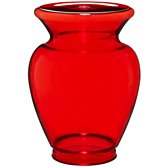
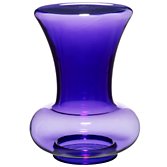
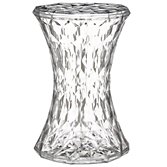
Yes the above are look like vases but have been designed to act as stools. Made in a ruby-red transparent polycarbonate, which is shockproof, weather-resistant and durable. Take a browse at John Lewis web site
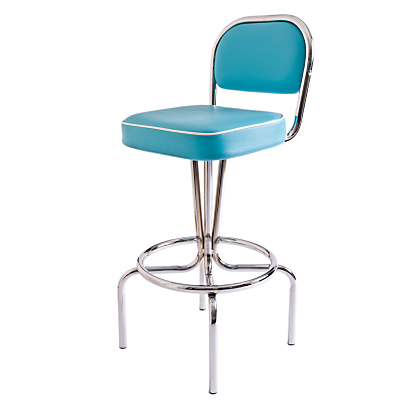
Retro furniture that will bring the look of American diners and bowling alleys of the 1950s and 60s right into your home - great for kitchens, games rooms, studies, or even children's bedrooms.
The Manhattan bar chair has hand-finished studded seat backs reminiscent of American car seat designs of the 1950s.
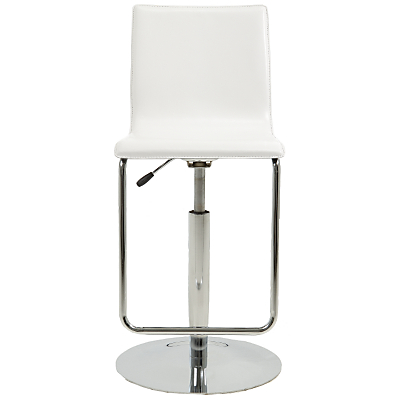
Bonded white leather on chrome adjustable leg will go with most kitchen design.
You can even have the stools set with LED lights on the inside to give that dramatic wow factor and create mood
Saturday 4 February 2012
House Design
A client called me up to design a house on a level plot within a flood plane. He had a good idea in his head of what he wanted but was not comfortable with how it all knitted together and could I help. I said 'Absolutely'.
The plot measured 20 metres deep and 25 metres wide. The original design of a 5 bedroom family residence complete with double garage. As you can see there is a dormer in the garage roof to serve an Ensuite to the Master bedroom
Depicts the same 2400 square footage family home but the external materials have been altered to show the client how the house will sit in the street scene. Also very useful for planning.
Further tweaks to the frontage with stone quoins, cills and headers
Almost there. After swept track analysis of vehicles turning off road and issues with sight lines it was agreed to mirror image the house and set the garage back so that cars can turn (whilst some are parked)
FINAL HOUSE.
The utility has gone back into the house next to the open plan kitchen, leaving behind a full double garage
The plot measured 20 metres deep and 25 metres wide. The original design of a 5 bedroom family residence complete with double garage. As you can see there is a dormer in the garage roof to serve an Ensuite to the Master bedroom
Depicts the same 2400 square footage family home but the external materials have been altered to show the client how the house will sit in the street scene. Also very useful for planning.
Further tweaks to the frontage with stone quoins, cills and headers
Almost there. After swept track analysis of vehicles turning off road and issues with sight lines it was agreed to mirror image the house and set the garage back so that cars can turn (whilst some are parked)
FINAL HOUSE.
The utility has gone back into the house next to the open plan kitchen, leaving behind a full double garage
LIGHTING IN THE HOME
LIGHTING
Life was so simple in the ‘Good Old Days’. The Living room had a central ceiling rose with a 100 watt bulb operated by a single switch, light on and everyone was happy. But nowadays the choice and confusion is bewildering from LED’s, halogen and fluorescents. Low voltage or mains? Inset or wall lights?
The Lighting Scheme should ideally be done by a qualified lighting designer for the detailed scheme to be successful. The scheme should take into account each room and brief from the client about room usage.
Who will be using the room? Will the room double up for homework, study etc. Are there any special furniture, features or artwork that requires Accent lighting.
Bathrooms
Are now zoned and light fittings are classed accordingly to the IP rating (Ingress Protection). Zone 0 is the area inside the bath or shower and only light fittings classed for zone 0 can be used. Recessed down lights work well in bathrooms as background lighting. Task lighting could be illuminated mirrors. Remember also to include a shaver socket with or without light that could be used for electric toothbrushes.
When building a home or an extension you should know your lighting plan right at the design stage. This needs to be in place to ensure first fix goes smoothly. You should pay attention to the natural light that will be entering each room.
General Lighting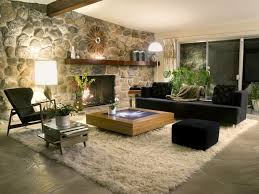
Is the main light in each room. It can be achieved through central pendants, down lights or even wall lights.
Accent Lighting
Is used to add contrast and interest to highlight features and areas of interest
Concealed Lighting
Means that you do not see the light source, just the effect it creates. Used under kitchen wall cupboards, under kitchen plinths, in alcoves and over pelmets.
Decorative Lightings
Is simply striking and to give a statement such as chandeliers, floor standards lamps and unusual wall and table lights.
The Building Regulations now require that a minimum of 25% of light installed in a new build must come from a low energy source. Meaning, fittings that will only take lights that have a luminous efficacy greater than 45 lumens per circuit Watt. Fluorescent and CFL’s, LED’s would all conform to this, whilst fitting low energy bulbs with bayonet or screw cap bases do not.
DOMESTIC DWELLING
INTERNAL LIGHTING 3 out of 4 to be low energy
Fittings with luminous efficacy greater than 45
lamp lumens per circuit Watt and total output
greater than 400 lumens. Fittings of less than 5
circuit Watts executed.
EXTERNAL LIGHTING Not greater than 100 lamp Watts per fitting and
than 45 lumens per circuit wall and automatically
controlled when daylight sufficient and controlled
manually by occupant
Low Energy light bulbs have improved greatly in the last few years. Energy efficiency has never been easier; you can save money and help the environment just by changing your light bulb
Incandescent Bulbs
are only 10% efficient and are known as Tungsten or General Lighting Service (GLS) are the traditional type that most of us have grown up with but are soon to be replaced in all the shops with Energy efficient bulbs known as Compact Fluorescent lamps (CFL).
are only 10% efficient and are known as Tungsten or General Lighting Service (GLS) are the traditional type that most of us have grown up with but are soon to be replaced in all the shops with Energy efficient bulbs known as Compact Fluorescent lamps (CFL).
CFL’s are available in standard bayonet and screw versions and in all different shapes and sizes. CFL’s use 75% less electric than the old incandescent bulbs.
Light is measured in Lumens and Power is measured in Watts
Choose the right bulb for the right situation.
GLS bulbs radiate right all round as a cone whereas CFL bulbs emit light sideways. So if you want to mount a light on the wall you should use a 2D CFL
LED
Light Emitting Diodes have at last come of age. This type of light has a very long lifespan. LED lights can be used as an alternative to low voltage lights and are good for accent lighting as they can produce coloured lighting which is changeable for creating mood
Wednesday 11 January 2012
CHANGES TO OWNERSHIP OF YOUR SEWER
Important changes came in force on 1st October 2011 that will affect most people embarking on an extension to their homes.
From October 1st 2011
1. Any private sewer that communicates with a public sewer, and and private lateral drain will transfer to their local Water supplier (generally Welsh Water Authority for Monmouthshire and Wessex Water for Tutshill, Coleford) and become a PUBLIC sewer or public lateral drain
What are private sewers and lateral drains?
Private sewers and lateral drains are the sections of sewer pipe or drain that are shared with another persons property, or run through another persons land. It is estimated that up to half of properties in England and Wales are connected to, and the owner is responsible for, a private sewer.
How will you benefit from this change?
It means the ownership and maintenance for private sewers and lateral drains will be transferred to the Water supplier.
You will still be responsible for the section of drain between your property/building and the transferred private sewer or lateral drain
What if I want to build an extension or garage?
Before October 1st 2011 if you built over a public sewer or 3 metres within a public sewer then you would have had to enter into a Building Over a Sewer Agreement with your water supplier. That is still in force but now added to that, a public sewer is taken as the old shared private drains that run through your property
So beware of building an extension and find out if the drain below is a public sewer. Building Control will notify the sewer authority if they believe that you are building over a shared /lateral drain.
Monday 9 January 2012
FIRE EXPLAINED SAFELY IN THE HOME
Understanding the Fire Regulations within the home environment can be quite daunting but as everything else its mainly down to common sense and a few pointers.
The building regulations Part B (Fire Safety) altered on 18th December 2006 and came into force on 6th April 2007. This will affect future building works in England and Wales, such as the erection or material change of a building and how the fire safety is designed into a building.
For non domestic buildings, the key changes include the introduction of a maximum unsprinkled compartment size for single storey warehouses, new guidance on residential care homes and a new requirement to ensure occupiers are aware of their buildings fire protection.
Generally if you have a new house (don't we all) you do not have to worry about the fire standards as they all tend to comply with current standards.
One point that you should remember is that everything should be designed and built to achieve 30 minutes fire protection. This is enough time for people to escape from the house. A 12.5mm thick plasterboard on a stud wall meets this requirement which is pretty much bog standard stuff.
So if alterations occur to a flat, terrace homes, B@B, Guest house etc then stricter guidelines and controls are enforced especially about party walls, compartmental floors and walls and it does get a bit complicated.
SMOKE ALARMS
All new homes should have the basic smoke detectors (mains operated) with battery backup. Any alterations to an older houses ie extension the these basic fire safety improvement will be implemented at the same time to bring you up to modern standards. The guideline calls for a smoke detector on each floor and 3 metres from all bedrooms. This was upgraded in April 2007 to meet higher standards set out in BS 5839 which calls for detectors in kitchens and living rooms as well. So generally smoke detectors are fitted in the hall and landings and heat detectors are fitted in kitchens and Optical detectors in living rooms. Optical detectors are used due to the smoke from an open fire (who has them now?). All this is in accordance with BS 5839 and should be designed by a specialist.
Do not forget that if you have a gas boiler sited within your bedroom then fit a monoxide detector as well to safeguard all people sleeping in that room.
Bedrooms need to have a means of escape window . This is now defined as having an openable sash having a clear opening of not less than 0.33 square metres and the bottom of the window being not more than 1100mm above the floor
LOFT CONVERSIONS
ESCAPE PATHS
There must be a protected escape route all the way from the loft all the way down to the ground floor exit door. This route or protected corridor must achieve half hour fire protection. So if your stairs are traditionally sited having closed rooms off all the way to the hallway then this requirement already complies. It gets complicated when the stairs are not off the hallway but are within the living room or open plan. All this will be determined by your designer.
DOORS
Prior to April 2007 all habitable doors along the escape route were fitted with door closers, but all that has now changed.
Nowadays all doors must achieve a 20 minute fire protection. So doors generally will have to be changed to FD20 door. This is all habitable doors and not wc or bathroom doors. If doors have glass fitted then these will have to be changed to solid doors of pyro glass fitted. These new fire doors are to control the spread of smoke or fire so that the occupiers can escape and buy enough time until the fire crew arrive.
If however you live in a listed building and can not change the doors then there are materials and paints that can upgrade the existing doors to satisfy the fire officer.
LOFT STAIRS
The stairs must also achieve a fire rating of 30 minutes to protect the occupiers on their escape.. There must also be a fire door fitted at the top of the stairs having the stairs open, or to enclose the stairs and have the fire door fitted at the bottom of the stairs.
FLOOR
The existing attic ceiling which will be upgraded to the loft floor will also need to achieve half hour fire resistance. If the existing ceiling is of 12.5mm plasterboard then all is OK but if you live in an old house (as I do) then the ceiling will more than likely be lath and plaster and will NOT meet the required fire protection and will need be be upgraded
Subscribe to:
Posts (Atom)


































